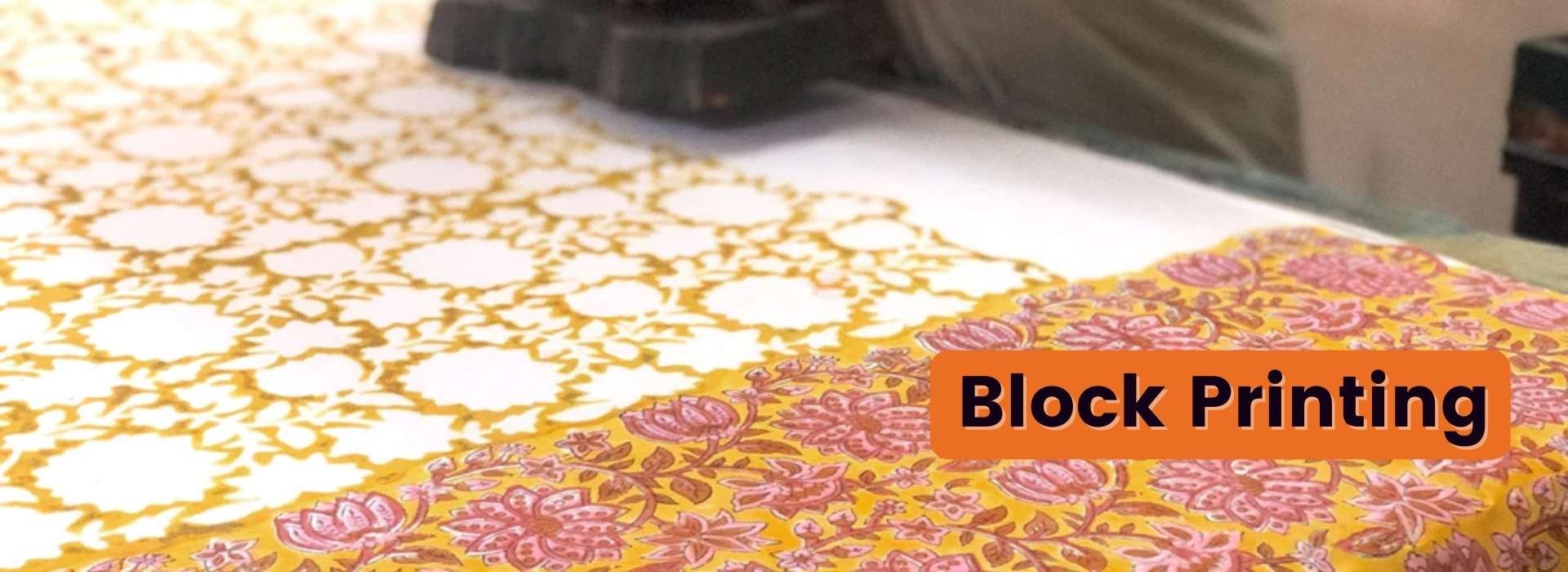
03-Dec-2022

The technique was later adopted by the Mughal Empire and became popular in India during the 18th century. And it is still popular to this day; look at the demand for Sanganeri Print bedsheets.
The process of block printing on fabric involves carving an image into a block of wood or metal, then applying ink to the surface and pressing paper onto it. The design is transferred from the block onto the paper, creating a print with sharp lines and bright colours.
The history of block printing is not definitive as there are many origin stories that one can find, especially in Southeast Asia and the Indian subcontinent. According to many, Block Printing is a technique developed in China and spread to Korea, Japan, Vietnam, Thailand, and other countries. The earliest known examples of block printing are believed to be from China in the 6th century AD.
Similarly, there are origin stories of how block printing was first discovered in India around the 12th century, the evidence of which can be found in the Jaipuri razai and other materials that use this print. The art of block printing from then has been passed on from generation to generation.
Block printing is a process of printing from carved blocks of wood. The wood block is cut to the size of the page, and then ink is applied to the surface. The block is then pressed onto paper, transferring the ink from the surface to the paper.
Screen printing is a process of printing from a stencil. It is the most common form of screen printing and can be used on many different types of surfaces.
Printing the design onto the surface usually involves using a squeegee and applying ink. Ink is pushed out of nozzles in the squeegee at a high pressure to allow droplets of liquid to spread over large areas of the stencil. The result is an even coat of ink over the entire screen, with small gaps where droplets did not cover an area covered by other drops. Some screens may also use a roller that applies less pressure.
Hand block print is the art of printing images or patterns on paper using a hand-held press. Initially, this art was used to produce beautiful and intricate designs for textile fabrics. But today, hand-block print is also famous for use in furniture, pottery, and other decorative items. You can easily find Rajasthani home decor items with Hand Block Prints. Some of the most popular prints include floral designs, abstract patterns, and traditional scenes from everyday life.
The versatility of the art that one can utilize with block print makes it among the most popular choice for a textile manufacturer. You can easily find differently designed Katha work bedcovers and more with unique art that will take your breath away.
Hand block prints are a type of design that is created by pressing ink onto paper. The designs are usually made up of geometric shapes and patterns. The most common type of hand block print is made up of geometric shapes and patterns. In most prints, such as in hand block print bedsheets, the ink is applied to the paper using a flat printing press. The designs produced by these inks tend to have fine lines and dots that give them a textured quality.
This printmaking is often used for decorative purposes, such as block print bedsheets. Because hand-block printing is a delicate process, it's usually reserved for high-end products. The designs typically have a unique and beautiful appearance that can't be reproduced using other printing methods.
